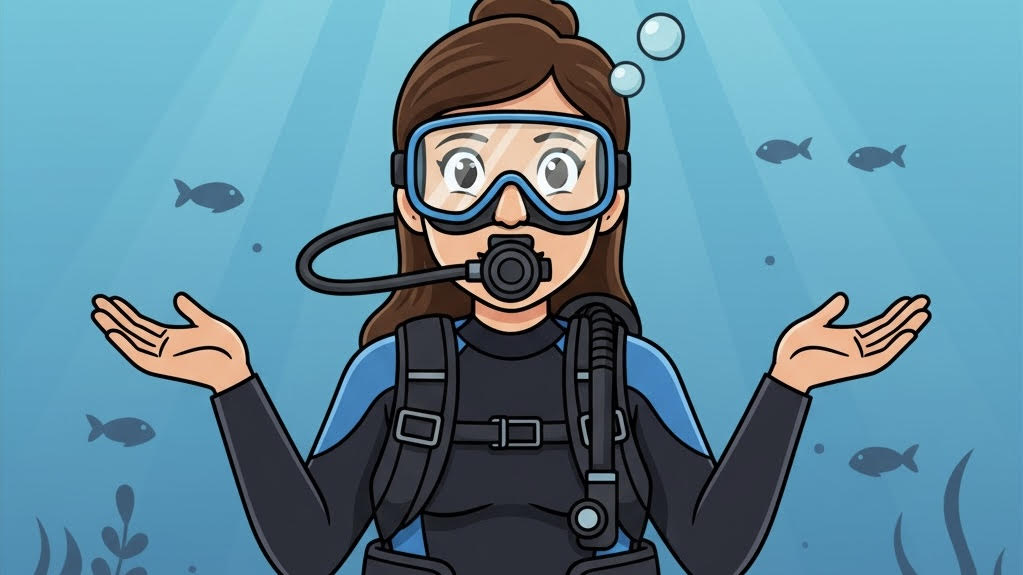
The Unwritten Rules of the Underwater World (Or, How Not to End Up as Shark Bait)

You’ve got your C-Card, you’ve memorized the hand signals, and you’ve spent a small fortune on gear. You’re ready to dive, right? Almost. The SDI manual is great, but it leaves out the most crucial, unspoken rules of the underwater kingdom. These aren’t just guidelines; they’re the difference between a great dive story and a cautionary tale you’ll be telling in the emergency room.
Rule #1: Thou Shalt Not Rely Solely on a Trusty, Yet Vague, “Uhh, I Think We Have Enough Air”
The most common lie told underwater isn’t “I saw a mermaid”; it’s “My gauge is fine.” We’ve all been there: a mesmerizing reef, a shy octopus, or a slow-moving sea turtle has our full attention. We forget about the simple safety check that keeps us from an unexpected ascent. Your SPG isn’t just a suggestion; it’s the lifeline that separates you from the surface. Always check your pressure often and communicate it to your dive buddy. Because when they ask for your pressure and you give them the “Uhh, I Think…” hand signal, they’re not just looking at you—they’re judging you, and rightly so.
Rule #2: A Dive Buddy Is Not a Human GPS; They Are Your Life-Sized, Aquatic Guardian Angel
Your dive buddy is not just there to share the experience; they’re a crucial part of your safety system. They are the person who will notice you have your fins on the wrong feet, remind you to clear your mask before jumping in, and save you from getting tangled in kelp while trying to take a selfie. It’s a silent pact you make the moment you hit the water: “I will pretend to know where we’re going if you pretend you’re not judging me for bumping into that coral.” The truth is, your buddy is your backup plan. Cherish them, watch out for them, and never let them out of your sight.
Rule #3: The Underwater Kingdom Has a Strict No-Touch Policy, and Its Citizens Are Spiky, Stingy, and Grumpy
That beautiful, colorful sea creature? It’s probably a homeowner with a very strict “no trespassing” policy and a surprising ability to ruin your afternoon. The ocean is full of beautiful, fascinating life, but remember, you’re a guest. The “look but don’t touch” rule isn’t just about protecting the environment; it’s also about protecting yourself. Coral can give you a nasty cut, a seemingly innocent sea urchin can leave you with painful spines, and that vibrant jellyfish can leave a stinging memory you’ll never forget. Keep your hands to yourself and let the ocean’s residents do their thing.
Rule #4: The Most Dangerous Creature in the Ocean Is the One Holding Your Camera
We’ve all seen them: the diver so focused on a photo that they’re practically doing a handstand on a sea fan. Getting the perfect shot can cause you to forget basic safety rules. The “camera trance” is a real thing, and it can cause you to forget to check your air, lose track of your buddy, or drift into a potentially dangerous area. So, next time you’re about to snap that perfect picture of a clownfish, remember to do a quick safety check. The only thing worse than a blurry photo is a blurry photo taken just before an emergency ascent.

Conclusion
These unwritten rules, while humorous, are born from the hard-won experience of divers who have learned the hard way. They’re what separate a great dive from a memorable, but maybe-not-for-the-right-









